ExpertDAQ EX9018BL-M is an 8-channel thermocouple input module that offers accurate temperature measurement and monitoring capabilities. With its differential input type, it can measure temperatures in harsh industrial environments. The module supports various thermocouple types including J, K, T, E, R, S, B, and N. Its 16-bit resolution ensures precise temperature readings, and the configurable input range allows for flexible operation. Additionally, the EX9018BL-M features thermal couple break line detection, enabling users to quickly identify any issues with the thermocouple connection.
ExpertDAQ EX9018BL-M is an 8-channel thermocouple input module that offers accurate temperature measurement and monitoring capabilities. With its differential input type, it can measure temperatures in harsh industrial environments. The module supports various thermocouple types including J, K, T, E, R, S, B, and N. Its 16-bit resolution ensures precise temperature readings, and the configurable input range allows for flexible operation. Additionally, the EX9018BL-M features thermal couple break line detection, enabling users to quickly identify any issues with the thermocouple connection.




















-
 1
1
-
 2
2
-
 3
3
-
 4
4
-
 5
5
-
 6
6
-
 7
7
-
 8
8
-
 9
9
-
 10
10
-
 11
11
-
 12
12
-
 13
13
-
 14
14
-
 15
15
-
 16
16
-
 17
17
-
 18
18
-
 19
19
-
 20
20
-
 21
21
-
 22
22
-
 23
23
-
 24
24
-
 25
25
-
 26
26
-
 27
27
-
 28
28
-
 29
29
-
 30
30
-
 31
31
-
 32
32
-
 33
33
-
 34
34
-
 35
35
-
 36
36
-
 37
37
-
 38
38
-
 39
39
-
 40
40
-
 41
41
-
 42
42
-
 43
43
-
 44
44
-
 45
45
-
 46
46
-
 47
47
-
 48
48
-
 49
49
-
 50
50
-
 51
51
ExpertDAQ EX9018BL-M User manual
- Type
- User manual
ExpertDAQ EX9018BL-M is an 8-channel thermocouple input module that offers accurate temperature measurement and monitoring capabilities. With its differential input type, it can measure temperatures in harsh industrial environments. The module supports various thermocouple types including J, K, T, E, R, S, B, and N. Its 16-bit resolution ensures precise temperature readings, and the configurable input range allows for flexible operation. Additionally, the EX9018BL-M features thermal couple break line detection, enabling users to quickly identify any issues with the thermocouple connection.
Ask a question and I''ll find the answer in the document
Finding information in a document is now easier with AI
Related papers
-
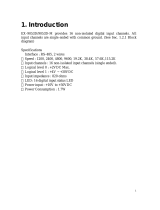 ExpertDAQ EX9053D User manual
ExpertDAQ EX9053D User manual
-
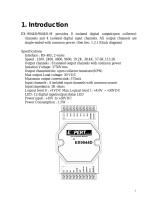 ExpertDAQ EX9044D User manual
ExpertDAQ EX9044D User manual
-
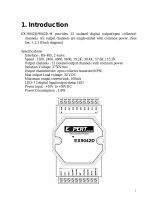 ExpertDAQ EX9042D-M User manual
ExpertDAQ EX9042D-M User manual
-
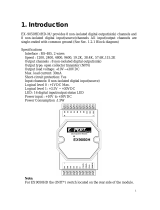 ExpertDAQ EX9050HD User manual
ExpertDAQ EX9050HD User manual
-
 ExpertDAQ EX-9060D-M User manual
ExpertDAQ EX-9060D-M User manual
-
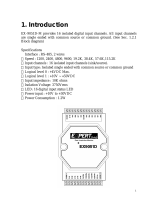 ExpertDAQ EX9055D-M User manual
ExpertDAQ EX9055D-M User manual
-
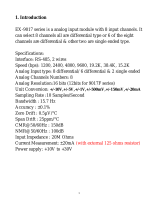 ExpertDAQ EX9017F User manual
ExpertDAQ EX9017F User manual
-
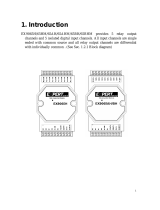 ExpertDAQ EX9065BHD-M User manual
ExpertDAQ EX9065BHD-M User manual
-
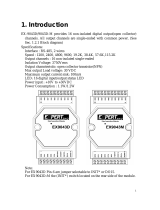 ExpertDAQ EX9043D User manual
ExpertDAQ EX9043D User manual
-
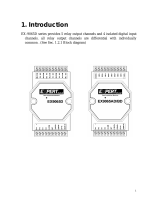 ExpertDAQ EX9065B User manual
ExpertDAQ EX9065B User manual
Other documents
-
ICP DAS USA I-7011D User manual
-
ICP M-6018-16 User manual
-
ICP DAS USA M-7017R User manual
-
ICP DAS USA M-7017 User manual
-
ICP DAS USA M-7019Z-S2 User manual
-
ICP DAS USA M-7017RMS User manual
-
ICP DAS USA M-7019R - 8-channel Thermocouple, Current and Voltage Analog Input Module, Communicates over RS-485 and Modbus RTU. User manual
-
ICP DAS USA M-7018R User manual
-
Advantech 5000 Series User manual
-
ADLINK Technology NuDAM-6017 User manual




























































